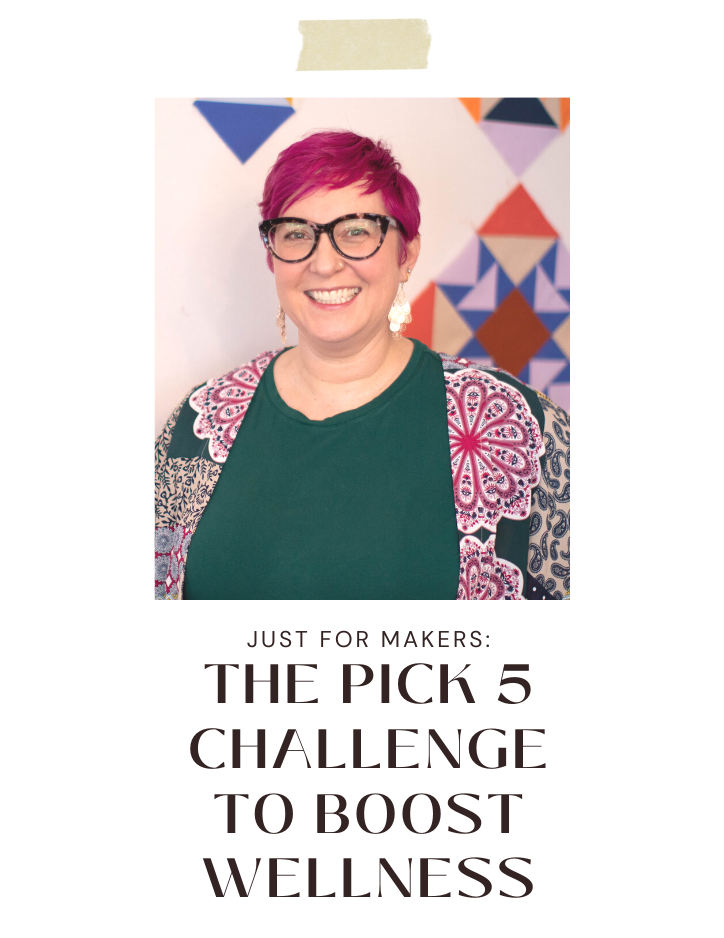Why do you do what you do? In a world where distraction and busy-ness seem to rule, it can be easy to forget what drives our decision-making. Today I’m sharing 9 motivation types and how to use them, so you can identify what drives you… and use it to your advantage.
But first: Why do we need to understand our motivation?
There are many reasons for wanting to understand what drives our decisions and commitments every day. Let’s look at a handful:
- If we know a type of motivation that works well in one area of our life, we can apply it in another area for greater success. For example, if you know you work well with external, reward-based motivation (like you get a sticker every time you brush your teeth), you can use that to improve your flossing habit (you get DOUBLE stickers if you brush AND floss).
- When we pause to get present, we can identify motivations that are not in alignment with our values. For example, if you’re going to a friend’s birthday party out of fear that you’ll be talked about if you’re not there, that’s a bummer motivation — especially if one of your values is courage. Being clear about your motivation can help you make choices that feel better.
- If we have a deep desire that’s motivating us to make change, we can use that to our advantage when it comes to really hard steps in our process. For example, I’m currently 3 months into a 12-month healing process for my broken foot. Today, physical therapy was difficult and painful… but I didn’t give up, because I have a deep desire to dance again. That motivation helped me push through.
These three reasons alone help us see that a deep understanding of our motivation can really help us design a life we love. That’s why I’ve created this list of 9 motivation types and how to use them — so you can start knowing yourself better today.
Quick tip: You can experience multiple motivation types at the same time. This isn’t a binary experience. You’re complex, and your motivations are, too.
Intrinsic motivation: You find joy in the process
When you’re in the flow of your process and you crave more of that joyful, easy feeling, that’s intrinsic motivation.
For example, let’s say that unlike a lot of your neighbors, you love mowing your lawn. It needs to get mowed every week, so you put on some good music in your headphones, charge up the mower, and tidy it up using lovely back-and-forth diagonal lines, just like at the baseball field. You love the alone time you experience, and you love the meditative quality of mowing.
So even on hot days, or when you’re busy, you mow… because you have intrinsic motivation.
Many motivation types are intrinsic, meaning they come from within.
A big advantage of intrinsic motivation is that you’re self-driven; you don’t need external sources of pressure to get you moving toward change. You’re flying solo, baby! A disadvantage for those of us who live with depression (like moi) is that if we’re feeling mentally unwell, it can be difficult to muster the intrinsic motivation we need. So it’s good to also identify extrinsic motivation types that work for us.

Extrinsic motivation: You need outside pressure
When you just don’t have your get-up-and-go and you need to rely on an outside source to get you moving, that’s extrinsic motivation.
For example, let’s say you need to get to an 8am work meeting. Wow, that’s too early, man! You just don’t wanna, and I wouldn’t wanna, either. But you know that if you make it to the meeting, your boss will see how committed you are to this project. So you set your alarm, lay out your clothes, and climb in bed early the night before.
So even though you would prefer to sleep in, you wake with the sunrise… because you feel extrinsic motivation.
Many motivation types are extrinsic, meaning they come from outside of you.
A big advantage of extrinsic motivation is that you don’t have to rely on just your inner resolve. You can look outside yourself for a variety of motivators to help you get things done. One of the challenges that can come with extrinsic motivation sources is that we may not have any control over them, so if we’re overly reliant on them, we may be let down if they become unavailable.
Let’s pause for reflection. If you could learn all 9 motivation types and how to use them, how might change your life?
Conditional motivation: You love a reward
When you’re more likely to accomplish something if you receive a reward, that’s conditional motivation.
For example, let’s say you’re dreading all the pressing you need to do before you can start cutting fabric for quilting. You might tell yourself you can use one of your fancy bath bombs tonight if you get it done… and that gets you motivated. You’re pressing and thinking about how good you’re gonna smell in the bath… hello, conditional motivation!
So even though you weren’t excited about the most boring step in making a quilt, you did it anyway… because you work well with conditional motivation.
A big advantage of conditional motivation is that your reward can be anything. It can be a physical object, a way to spend some time, a cookie — whatever floats your boat! Conditional motivation has its challenges, though, including relying on an extrinsic motivation source; what happens if we can’t get that reward? It can feel empowering to find additional motivation types that work for you so you’ve always got multiple ways to motivate yourself.

Proactive motivation: You want to move toward your goal
When you take steps toward a specific end result because you can see it — in fact, you crave it — that’s proactive motivation.
For example, what if you want to be fit enough to go to Disneyworld with your niece next year? You know you couldn’t do it today, but you’ve got 18 months to prepare. You can imagine the experience, see the joy on her face, crave creating memories with her and strengthening your bond. So you hit the gym, slowly building up your strength. You power through days when you don’t feel like it, because you know the payoff is gonna be so good.
So even though you weren’t a gym rat before, now you’re in beast mode like, every day… because you’ve embraced proactive motivation.
A big advantage of proactive motivation is that the positive day-to-day results will only increase your drive. As you see progress, you’ll realize you’re moving closer to your goal — and keep going.
Reactive motivation: You want to avoid a negative consequence
When you take steps to avoid something bad happening, that’s reactive motivation.
For example, let’s say you’re an author and you’ve got a big deadline coming up on your book. You need to turn in 4 chapters next month and if you don’t, your publisher might drop you (they’re very impatient). You’re struggling with writer’s block but you don’t want to lose this book contract, so you reach out to a writing coach for help, talk to friends for support, and block out two hours a day in your calendar to get those chapters done.
So even though you’re scared and frustrated, you take steps to make sure you don’t experience a negative outcome … because reactive motivation is working for you.
A big advantage of reactive motivation is that many of us can imagine how crummy a negative outcome will feel, and that helps us take action. A big challenge is learning how we can move out of reactive motivation and into proactive motivation when possible, which is a more empowered way of feeling about our goals.
Fear-based motivation: Your lizard brain is driving your choice
When you do something because you’re freaked out, that’s fear-based motivation (this is a form of reactive motivation).
For example, let’s say you’re really scared of looking like a “failing” artist, so you crank out lots of work to show your creative community. On the plus side, you’re making art! On the minus side, you’re doing it with a gross, icky feeling inside, because fear is driving your work.
So even though you feel afraid, you make art anyway… because you’re under the power of fear-based motivation.
A big advantage of fear-based motivation is that many of us hate feeling afraid, so we’ll take many steps to not feel that fear. But fear-based motivation has a major downside: We may make choices that aren’t in alignment with our values and beliefs in order to quell that fearful feeling.
When I work with fear-motivated clients, we try to look for additional sources of motivation that feel better. In this example, I might coach a client to consider their definition of failure; to get curious about why other people’s judgment matters; to get clear on how making art can feed their soul; and more.
Let’s pause for reflection. Is fear-based motivation driving your decisions? What would feel more empowering?

Self motivation: You want to make change for yourself
When you take actions or make change purely for your own benefit, that’s self motivation.
For example, let’s say you want to eat healthier because you want to feel good in your body. You’re not eating more produce and fewer cookies because someone told you to; you’re doing it because you have more energy when you eat this way. You might lose weight, but you’re not doing it so you can look “better” for anyone else… you’re doing it because you love yourself and want to feel your best. You’re doing this for YOU.
So even though other people might tell you what they think you should do, you’re making this choice yourself… because you’re using self motivation.
A big advantage of self motivation is that no one can take it away from you. When you make a choice motivated by your own personal needs, desires, values or beliefs, you’re acting on your own behalf.
Empathetic motivation: You want to make change for another
When you take action or make change because it benefits someone else, that’s empathetic motivation.
For example, think about the healthy eating example above. Imagine that instead of you doing it for yourself, you change your nutritional routine for others. Maybe you want to be healthier so you can live a long life and be a grandparent for many years. Partly it’s for you, but partly it’s because you want your offspring and their kids to have your presence and help for many years. You’re imagining how beneficial it will be for the whole family if you’re as healthy as possible, and that’s helping you make healthier eating choices.
So even though you love cookies (me too!) you’re eating less of them and munching on more fruit… because you feel empathetic motivation.
A big advantage of empathetic motivation is that some of us have a hard time loving ourselves (or weren’t taught to love ourselves) but we feel good when we care for others… so we’re willing to make changes if it benefits another person. A challenge of empathetic motivation is that if we always do things only for others, we may neglect our own needs and desires, and that’s not good.
When I coach clients who are stuck in only empathetic motivation, we focus on clarifying their own values and passions. This helps them learn how to focus on what works for them, as well as others.

Creative/curious motivation: You just want to see what you can make happen
When you try something, make something, or do something just because you want to see what happens, that’s creative/curious motivation.
For example, let’s say you’re looking at your front sidewalk, and you think, hmmm I wonder what would happen if I draw a hopscotch board with chalk on my sidewalk? You don’t have an end result in mind; you’re not sure what will happen. Will you hop in once it’s done? Will your neighbor join you? Should you use only one color of chalk, or five? Will you kick off an explosion of neighborhood sidewalk chalk contests? Who knows!
So even though you have no idea what will come out of spending time on that project, you just wanna see what happens… because you feel creative/curious motivation.
A big advantage of creative/curious motivation is that surprising, wonderful, interesting things can come out of it. Staying open to childlike energy can help you tap into a well of creativity in many areas of your life. When we take risks, we’re more likely to see rewards. (Listen: Within reason, okay? Not all risks are equal.)
Growing our capacity for creative/curious motivation is an essential part of being an artist. When our mind is open to possibilities — and willing to take risks because the potential for cool results is enticing — we’re more likely to create things that thrill us and others.
Now that you know 9 motivation types and how to use them, which one will you embrace?
We can use all kinds of motivation to help ourselves. When we pair intrinsic and extrinsic motivation types, we have a deeper well of support. When we find a motivation type that works well for us, we can put it to use in new areas. If we realize we’re leaning on only one type of motivation, we can benefit from exploring another.
Which of these motivation types works best for you? Jump into the comments and let me know!
And if you’d like to go deeper on this topic, please reach out. Exploring and understanding motivation is a big part of my coaching work, and I’d love to explore that with you!


What a helpful summary! Although I sew and create, this list is very useful for analyzing my motivation as an athletic, older person (gym, training, nutrition). They also made me think about how my kids approach goals.
thanks callie! i completely agree — we can use these motivation types to learn what keeps us on track in almost every area of life. 🙂 i will be so curious to hear how you use it with your kids!